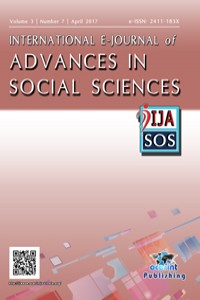Abstract
The English believe that being English is
first of all having a good sense of humor. Therefore, a shameful thing for them
is to be regarded as a person with no sense of humor. Thus, English humor,
which is very sophisticated, aristocratic and subtle, is widely used in their
everyday life. This paper aims to find out the relationship between the
violation of Grice’s maxims and the ambiguity that induce humor and laughter in
each case of violation.
The present
paper studies the types of ambiguity which are the most popular device in the
process of creation of English linguistic verbal jokes matching them to the
violation of Grice’s maxims that form an important constituent of linguistic
verbal jokes. First, Grice’s Cooperative Principles, their violation and the
way how they are violated are considered. Then, ambiguity in English linguistic
jokes is defined and categorized. After that, ten randomly chosen English
linguistic jokes (five lexical-semantic and five structural-syntactic jokes
respectively) are analyzed demonstrating the violation and the manner of
violation of Grice’s maxims in them.
If people said
exactly what they meant, and if people understood their interlocutors’
intention and interpreted what they heard correctly, there would be no
linguistic humor. According to American philosopher Paul Grice, people observe
certain cooperative principle to conduct successful interaction. Thus, Grice
suggests four main maxims (or super maxims) viz. maxims of quantity, quality,
relation and manner within his famous Cooperative Principles, the violation of
which can cause misunderstanding that is one of the main sources of linguistic
jokes. The above four super maxims can be violated in four ways: 1) quietly and
unostentatiously, 2) by opting out of a maxim, 3) coping with a clash between
maxims, and 4) flouting a maxim in order to exploit it. (Grice, 1975, pp.
45-49).
In linguistics, ambiguity is defined as
words, phrases or sentences that express more than one meaning. (Crystal, 2008,
p.22). According to another definition, ambiguity is a construction which
admits more than one interpretation. Salvatore Attardo et al. (1994), in their
study of a corpus of two thousand jokes, found out that four hundred and
thirty-one of the four hundred and forty-one verbal jokes, i. e. about
ninety-eight percent, were ambiguity based. Ambiguity itself falls two main
types – lexical-semantic and structural-syntactic. In the first case, any word
or sentence has more than one meaning, in the second case, the role of any word
or its relation with other constituents in the sentence has more than one
possibility.
In linguistic jokes, the humorous effect is
achieved through lexical-semantic or structural-syntactic ambiguity where
Grice’s maxims are violated. Thus, the main conclusion will be as follows:
In the first line of two-linear verbal
linguistic jokes, Grice’s maxims of quantity (make your contribution as
informative as required) and manner (avoid ambiguity) are violated. In the
second line (punch line), Grice’s maxims of relation (be relevant) and manner
(avoid ambiguity) are violated. Maxims of quantity and manner are violated
quietly and unostentatiously, whereas maxim of relation is violated by flouting
the maxim.
The present study
paves the way for future studies in terms of finding out the relationship
between types of ambiguity in verbal linguistic jokes on the one hand, and the
violation of Grice’s maxims in these jokes and manner of this violation on the
other.
References
- Attardo S., H. Attardo, D. Baltes P., &Petray, M.J. (1994). The Linear Organization of Jokes: Analysis of Two Thousand Texts. Humor: International Journal of Humor Research 7(1), 27-54. Crystal D.,(2008). A Dictionary of Linguistics and Phonetics 6th Edition. Oxford: Blackwell Publishing. Gao Chao, (2013). A Pragmatic Study of Ambiguity and Puns in English Humor. 2nd International Conference on Management Science and Industrial Engineering. 666-669. Giorgadze M., (2014). Linguistic Features of Pun, Its Typology and Classification. European Scientific Journal, Special edition, vol.2, 271-275. Grice P., (1975). Logic and Conversation. Syntax and Semantics 3, 41-58. Lew R., (1996). An Ambiguity-based Theory of the Linguistic verbal Jokes in English. Doctor’s Thesis, Adam Mickiewicz University. Sanchez Roura, (1995). Syntactic Ambiguity as a Device in British Humour. Revista Alicantina de Estudios Ingleses, 8, 209-228. Ross A.,(2005). The Language of Humor, London & New York, Routledge. Seewoester S.,(2009). Linguistic Ambiguity in Language-based Jokes. Master’s Thesis, DePaul University.
Abstract
References
- Attardo S., H. Attardo, D. Baltes P., &Petray, M.J. (1994). The Linear Organization of Jokes: Analysis of Two Thousand Texts. Humor: International Journal of Humor Research 7(1), 27-54. Crystal D.,(2008). A Dictionary of Linguistics and Phonetics 6th Edition. Oxford: Blackwell Publishing. Gao Chao, (2013). A Pragmatic Study of Ambiguity and Puns in English Humor. 2nd International Conference on Management Science and Industrial Engineering. 666-669. Giorgadze M., (2014). Linguistic Features of Pun, Its Typology and Classification. European Scientific Journal, Special edition, vol.2, 271-275. Grice P., (1975). Logic and Conversation. Syntax and Semantics 3, 41-58. Lew R., (1996). An Ambiguity-based Theory of the Linguistic verbal Jokes in English. Doctor’s Thesis, Adam Mickiewicz University. Sanchez Roura, (1995). Syntactic Ambiguity as a Device in British Humour. Revista Alicantina de Estudios Ingleses, 8, 209-228. Ross A.,(2005). The Language of Humor, London & New York, Routledge. Seewoester S.,(2009). Linguistic Ambiguity in Language-based Jokes. Master’s Thesis, DePaul University.
Details
| Journal Section | Research Article |
|---|---|
| Authors | |
| Publication Date | April 30, 2017 |
| Submission Date | January 9, 2017 |
| Published in Issue | Year 2017 Volume: 3 Issue: 7 |
Cited By
Analisis Maksim Perbualan Grice Dalam Soal Jawab TV3
Issues in Language Studies
https://doi.org/10.33736/ils.1225.2018
English Jokes in Azerbaijani: Not Always on the Same Train
Khazar Journal of Humanities and Social Sciences
https://doi.org/10.5782/2223-2621.2024.27.2.100
Contact: ijasosjournal@hotmail.com
The IJASOS Journal's site and its metadata are licensed under CC BY
Published and Sponsored by OCERINT International © 2015- 2025

